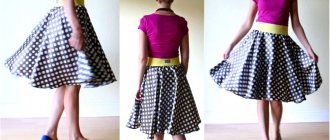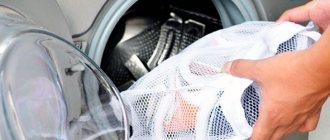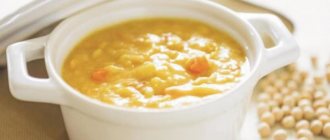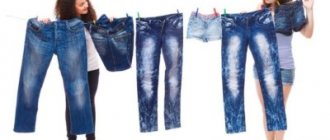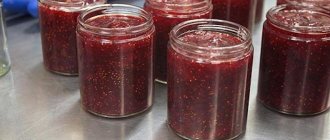Processing dishes before sterilization
It is important that the dishes in which the first and subsequent sterilizations will take place are processed. Conventional detergents used in everyday life are not suitable for children's dishes, as they have a chemical composition and, if not processed carefully enough, lead to allergic reactions and even dysbacteriosis.
Laundry soap and soda are safe for children's dishes. They are not capable of leading to allergic reactions, but do an excellent job of disinfection. To process dishes for further safe use, you must follow the following recommendations:
- all parts of the bottle must be individually and thoroughly washed;
- the pacifier is unusable if a white coating has formed inside the silicone cavity;
- if a baby bites through a favorite attribute, it can no longer be used;
- Both nipples and bottles should be sterilized;
- It is strictly prohibited to use “adult” chemicals to clean dishes.
If you follow these simple rules, sterilization of nipples and bottles will be successful.
How to sterilize baby pacifiers?
There are many ways to sterilize nipples. Let's consider the basic methods, proven over the years and by experienced mothers.
Boiling
Boiling is the most accessible and effective method of sterilization. In order to carry out boiling, you should take a pre-washed pan, pour water into it, and bring to a boil. Immerse the pacifier in it and boil for several minutes or put it in boiling water without boiling. Both methods will cope with the elimination of bacteria.
You can also clean the pacifier of germs using steam. To do this, just hold the pacifier over a pan of boiling water.
If there are several pacifiers, or you need to disinfect a feeding bottle, you can use a steamer pan. To do this, take a container, fill it with water, wait until it boils completely, place the bottles upside down in the steamer and hold them over the steam for 3-4 minutes.
In a steamer or dishwasher
Automated household appliances are excellent assistants in sterilizing pacifiers. An electric steamer has a number of advantages. It makes it possible to set the temperature and time mode, and also quickly copes with the task.
Can bottles and nipples be sterilized in the dishwasher? The answer is yes if the dishwasher is equipped with a setting greater than 80 degrees. At lower temperatures, sterilization will not occur, and the material will wear out from time to time.
Microwave
A microwave, like a dishwasher, is not designed to sterilize nipples, but it is still possible to clean it using it. To do this, you need to take a clean container in which the process will take place, immerse the pacifiers in water and clean at maximum power for 7-8 minutes.
Using a sterilizer
Of the household items listed above, the most suitable for cleaning bottles and pacifiers is a sterilizer. It is easy to use, affordable and perfectly destroys bacteria using an ultraviolet lamp.
We treat with antiseptics
An antiseptic is a drug that you can purchase at a pharmacy, used to disinfect household items, and has a chemical composition.
Application: dissolve the antiseptic tablet in a five-liter container of water, immerse pacifiers or bottles in water for 15 minutes, then rinse with boiled water. It would seem that the job is done, the microbes are killed, and this is so. However, after using the antiseptic, an unpleasant odor remains, due to which the baby may refuse the pacifier.
How to sterilize a pacifier
After birth, a baby needs a mother. Not only for feeding, but also for comfort, emotional intimacy and relief.
A mother cannot physically be constantly with her baby and offer the breast for any reason. Many babies have a very pronounced sucking reflex. They put everything into their mouths: clothes, diapers and their own fingers.
It’s at moments like these that you wonder how to choose a pacifier for your child and how to properly sterilize it.
Should you give a pacifier to your baby?
Disputes on this matter do not end to this day. Some pediatricians say it is necessary. Other doctors do not recommend it. It is only known that all children are individual and the sucking reflex in each baby is expressed to varying degrees.
Another well-known fact: pacifiers were invented a long time ago. Children were given a piece of bread wrapped in cloth or a piece of leather to suck on. Modern objects to satisfy the sucking reflex began to be produced only around 1900.
Features of pacifiers made of different materials
Currently, pacifiers are made from two materials: silicone and latex. It is not difficult to distinguish them. Silicone nipples are transparent, stiffer, but also more durable.
Latex pacifiers are yellow in color, they are soft, more reminiscent of a woman's breasts to the touch, but they wear out quickly and have an odor. Both are quite durable.
When it comes to cleanliness, silicone pacifiers are more hygienic as they collect less dust, hair and dirt.
We recommend:
Baby sucks fist: what to do?
These two materials behave differently in sterilization.
Silicone pacifiers can withstand repeated boiling without visible changes. But latex nipples do not have these qualities. They are, of course, heat-resistant, but prolonged boiling can ruin it. Therefore, latex pacifiers need to be changed more often.
According to the instructions, the service life of a silicone pacifier is 6 weeks, and a latex pacifier is 4 weeks.
Conclusions:
- Silicone pacifiers are heat-resistant, durable, rigid, hygienic and transparent.
- Latex nipples - do not withstand long-term temperature treatments, wear out quickly, are soft (babies like them more), attract dust and have an odor.
How to choose the right pacifier for a child?
Small children do not care at all whether their pacifier is latex or silicone. But when the time comes for teething, it is better to offer a latex pacifier. It is softer and will not in any way affect the bite or position of the teeth.
Types of pacifiers
Few people know, but nipples vary in shape and size. You can’t just go to a pharmacy or children’s store and buy a “breast substitute.”
The shapes of pacifiers are: round, oval and orthodontic. If in the first two cases everything is more or less clear, then with the third, questions arise. These are nipples whose silhouette resembles a mother's breast. More precisely, it has a thin neck and a beveled tip. Pediatricians recommend buying pacifiers with a flat end to form the correct bite.
In addition to differences in shape, there are “substitutes” of all sizes that correspond to different ages. For newborn babies, pacifiers are very small. It’s easy to find the right size by reading the instructions on the package.
Marketing does not stand still, and today there are pacifiers for sale at night and in the dark that glow.
To determine which model is right for your baby, you need to try several types of pacifiers.
How to sterilize a pacifier?
People have come up with six ways to sterilize baby supplies:
- The easiest way to disinfect a pacifier is to boil it. We take water into an enamel pan and bring it to 100 degrees. Then carefully place the item in boiling water and leave for 2 minutes. Staying in hot water for too long is not recommended, as pacifiers tend to deform from high temperatures.
- You can disinfect children's beauty by resorting to water vapor. In this case, it is enough to hold the pacifier over the spout of a boiling kettle for a minute. Just don’t take it with your bare hands, otherwise you are guaranteed to burn your fingers. You can use cosmetic or medical tweezers.
- The next method is modern: you can sterilize children's dishes and accessories by placing them in a dishwasher. But you need to choose the right operating mode. Sterilization is possible only at high water temperatures of 80 degrees.
- An excellent method that does not require much time and effort is disinfection using a microwave oven. But before use, make sure that the instructions allow this action. If yes, then feel free to place the pacifier and bottle in an electric appliance for 90 seconds.
- Sterilization in a double boiler is also an excellent solution to the problem. The time is about three minutes.
- For those who do not trust microwave ovens and steamers, they have created specialized equipment - sterilizers. The devices are equipped with halogen lamps and are produced in several types: electric and for microwaves.
It is important to remember: before sterilization, the pacifier must be thoroughly washed with a soda solution or laundry soap. Stores also sell detergents special for children's dishes.
Tips for using pacifiers
Read the instructions before use.
- The service life must be indicated on the packaging.
- The new pacifier needs to be boiled in water for three minutes.
- Store the item in a place protected from sunlight so that the pacifier does not lose its original shape.
- Wash the pacifier at least once a day.
- To protect children's items from dirt and dust, use a special chain with a clip that is attached to clothing and a cap.
- When the baby turns six months old, bottles and pacifiers do not need to be sterilized. It will be enough to pour boiling water over the children's dishes.
- There should be a separate area for clean nipples. For example, a plastic container. This way they will always be kept clean and ready for use.
- Don't lick your baby's nipples. Because the human oral cavity contains millions of different bacteria and it would not be the best option to transmit them to the baby.
What to consider when sterilizing nipples
There is no consensus on how often the pacifier should be sterilized. Some are of the opinion that boiling is only necessary when purchasing an attribute or when the baby is ill, while other parents sterilize bottles and nipples several times every day.
It is important to follow the following rules:
- Keep disinfection utensils clean and boil before use.
- Boiling for a few minutes is the key to a clean pacifier. Bacteria do not live at high temperatures for more than a minute.
- All parts of the pacifier should be sterilized, not just the latex or silicone part.
- Rinsing with cold tap water is unacceptable and can lead to dysbacteriosis.
With the birth of a baby, many questions and doubts arise about how to properly care for him so as not to harm him. Sterilizing the pacifier is no exception. Each mother chooses one method or another. But it should be remembered that cleanliness is the key to the health and well-being of the child.
Video material
We hope that after reading the information in this article, you were able to make a decision for yourself on how to sterilize nipples for a newborn. Now you will spend exactly as much time on this as you expected, but hopefully not at the expense of the quality of the process and the final effect. We wish you and your beloved baby health!
8th week of pregnancy description
2021-06-22 07:55:26
Tests during pregnancy: which and when to take What tests are taken during pregnancy by trimester
2021-06-22 07:55:26
Traces of protein in the urine of a pregnant woman: how to distinguish normal from pathology, causes and consequences Why is there a lot of protein in the urine of pregnant women
2021-06-22 07:55:26


